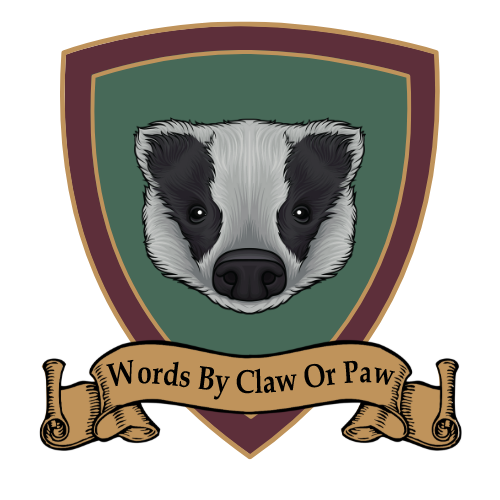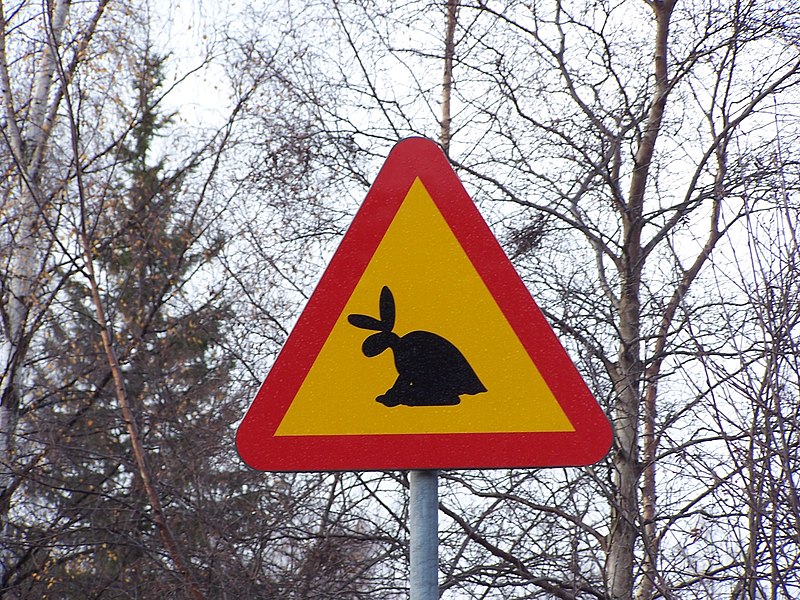Skvader ([ SKVAH-der ] | / ˈskvɔ dər, ˈskvɒd ər /)
A skvader is an avian lagomorph; essentially, a rabbit with bird wings. Traditionally, they have been described as resembling a cross between a rabbit and a wood grouse, but this is likely due to a famous taxidermy hoax that was a tourist attraction prior to The First Word War.
Basic Information
Anatomy
The skvader is a lagomorph with wings and feathers. It has been described in various combinations of birdlike and rabbitlike features, but the skvaders that have been recorded to date have all had essentially lapine bodies, with a true set of wings that resemble those of birds. While a famous taxidermy hoax has been cited as the source of the tales of this creature, combining the bodies of a rabbit and a wood grouse, all the observed skvaders thus far have been capable of flight, though only for short distances.
These wings are complete limbs, which exist separate from, and in addition to, the skvader's four perfectly normal lapine legs. As a result, the skvader often appears unusually pudgy or fluffy, since a completely separate set of muscles is also required to operate the wings.
However, a lagomorph is not particularly aerodynamic, so a skvader in flight can hardly imitate the feats of stooping hawks or soaring eagles. Flight is most often used briefly to escape predators or react to possible threats, and tends to consist of more gliding than flying.
When in flight, a skvader positions itself vertically, with its wings holding it up by its shoulders. The effect somewhat resembles the position of a hang glider and pilot.
A skvader's tail is a unique structure, with twelve short retices growing out of the top of a rabbit's typical fluff. It is used much the same as the rudder of a boat. However, it allows the skvader to maintain the uses of its tail that are more typical of other lagomorphs, such as warning their fluffle that they might have been heard or seen, and confusing predators by creating a focal point, buying themselves a moment of escape time. Retices are also relevant to mating, as are crests, which are specific to bucks and not does.
Otherwise, skvaders share the usual powerful hind legs, claws, sharp incisors, long ears and fluffy tails of all lagomorphs, allowing them to chew through even the toughest materials given time, evade predators by outrunning and out-hopping them before they resort to flight, and fight when they must.
Genetics and Reproduction
Speculation on the possible genetic relationships of cryptid lagomorphs is a hot topic in science currently. However, skvaders have 44 chromosomes, like rabbits, as opposed to the 48 chromosomes of hares, meaning they are likely more closely related to rabbits. This information has led to a recent reclassification of the skvader from the Lepus genus (hares) to the Oryctolagus genus (European rabbits.)
Feathers seems to serve additional roles in mating. Bucks and does alike will fan their tails to attract mates, and bucks often have decorative crests, which they will ruffle and display for the same purpose. Bucks have been observed engaging in similar "strutting" gaits to the cocks of fowl to attact the attention of does. In some cases, they have also been observed beating their wings to make a "drumming" noise as ruffled grouse do.
Like other lagomorphs, skvaders seem to breed frequently and bear many young at once, often from several different bucks. Breeding seasons vary and usually last for nine or ten months of the year, depending on climate, and the gestation period is about four weeks long.
Compared to rabbits, however, litter sizes are small. Each doe produces up to four litters a year, ranging from only one to five kits (sometimes also called "chicks," although this description is technically inaccurate.) They nurse their litters in burrows, preferably dug into hillsides or buttes with good visual range, or beneath thick undergrowth in wooded areas. A fluffle will nest together in a cluster of burrows, but do not create warrens.
Growth Rate & Stages
Kits are born live, naked, and hairless, although a coat of down grows in within a couple of days. The first moult takes place after about a month, and young skvaders will begin their first efforts at flight as soon as proper feathers have grown in. By about three months old, they are capable of keeping up with their parents in the air, and they leave the burrow at sexual maturity, which happens at about the age of six months.
Ecology and Habitats
Pliny the Elder wrote about what was almost certainly the first historical skvader sighting in his Natural History, which was encountered in the Alps. In more recent times, they almost became the official animal of the Swedish province of Medelpad.
Since their reappearance, they have been documented throughout the Alps, surrounding forests in all six of the countries the famous mountain range spans, and Sweden, with some ranging into other Scandanavian and Northern European countries. They do not yet appear to have made it to the United Kingdom.
Some of this range overlaps the European range of the horned hare or jackalope. However, skvaders seem to prefer higher elevations. One credible observation from a wildlife centre describes a jackalope fluffle driving out a skvader fluffle during a drought, so these ranges may not yet be fully settled.
Dietary Needs and Habits
Although there is no such thing as a strict herbivore, the skvader comes close. Its diet mostly consists of grasses. Captive skvaders seem to share the archetypal lagomorphic love of carrots and bananas. Like rabbits, they digest food in two stages, first producing pellets, which they later chew to gain the most nutritional value that they can.
Behaviour
The skvader appears to be fairly typical of other rabbits and hares; alert, twitchy, responsive to danger in its environment, and preferring flight over fight. Socially, it organizes in "fluffles," also sometimes incorrectly called "flocks," that interact, scuffle, interbreed, and protect each other from predators.
Additional Information
Domestication
One enterprising German breeder has been successfully raising skvaders in captivity, breeding for colourful fur and plumage. They seem to have taken to domestication as well as rabbits do, although it will still be several generations before the creatures are fully domesticated.
Uses, Products & Exploitation
According to rumour, skvaders offer the best qualities of rabbit and chicken in their meat, and there are places in the Alps where you can order roast skvader, skvader soup, or a plate of skvader wings for €2000, €500, or €1000 respectively. Rumour also has it that House Lapin will personally send the Owsla after you if you do.
Perception and Sensory Capabilities
The skvader has all the advantages of a lagomorph's keen senses; keen colour vision, widely-spaced eyes, excellent hearing thanks to its long ears, long whiskers to feel its way in the dark. These all aid the creatures in evading their many predators.
WIP
Streamer
Missing
Status: Location Unknown
Deceased
Status: Deceased Character
Retired
Status: Retired Character or Article
Scientific Name
Oryctolagus alatus
Origin/Ancestry
It is possible that the skvader and the wolpertinger are closely related. DNA studies are underway, albeit with an extremely limited sample size.
Lifespan
Unknown
Conservation Status
Like most of the new, or recently revived, mythological creatures, the skvader is considered critically endangered. House Lapin has listed them among the creatures they will fund protection efforts for under the Lagomorphic Trust.
Body Tint, Colouring and Marking
Skvaders in the wild typically show agouti or melanistic colouration in their fur, with dappled browns, greys, and whites being most common in their plumage. However, there are a significant number of white skvaders common to areas where snow is commonplace for significant parts of the year.
Occasionally, skvaders show more colourful variations in both fur and plumage. While this is of dubious use in the wild, it is highly valued in the newly-developed domestic varieties.

Glücklich "Lucky," a rescued amputee buck who became the first skvader bred in captivity by Sable Aradia with Artbreeder




















Comments